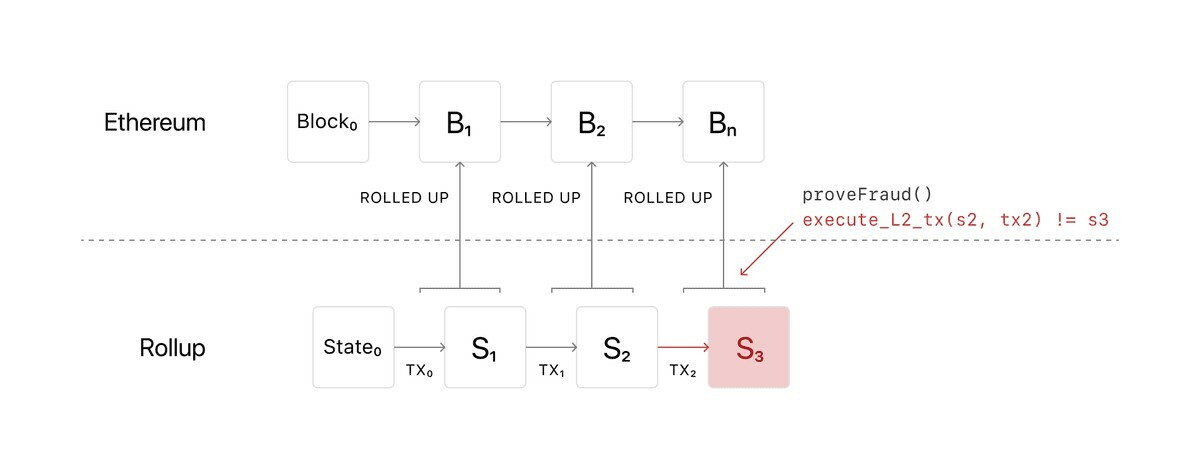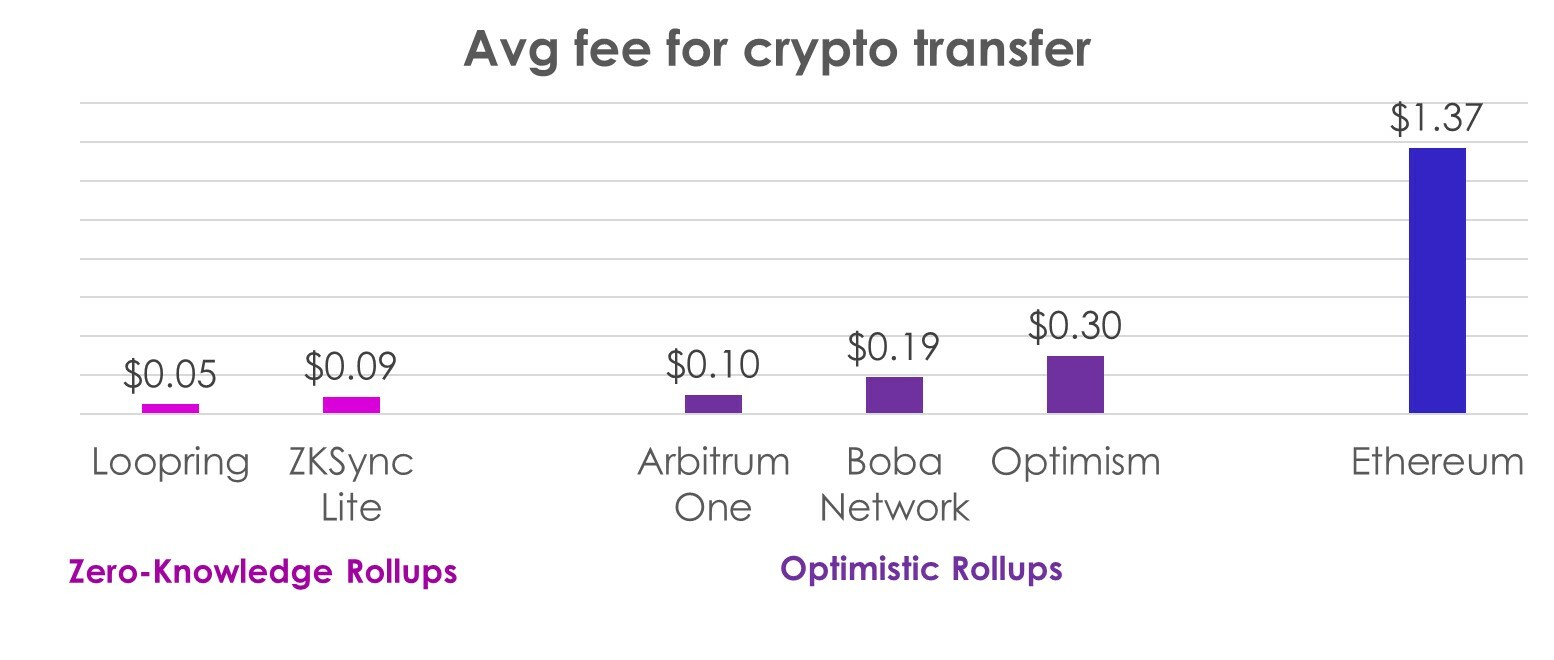A number of solutions have been proposed to solve the problem of high fees and slow transaction processing times on Ethereum, the world’s leading blockchain for decentralized apps. Among the most popular solutions are rollup platforms.
Let’s take a closer look at this exciting technology that helps make transacting on the blockchain faster and much cheaper.
What Are Rollups?
Rollups are platforms built on top of blockchain networks that help process transactions on the blockchain more efficiently by taking some of the processing load off-chain. Rollups are one type of Layer 2 solutions, protocols designed to improve blockchain scalability and cost efficiency.
Rollups typically process transactions off-chain and then post them to the underlying blockchain in batches. By using off-chain processing and posting transactions in batch mode, rollups are capable of achieving significant technical and cost efficiencies compared to transaction processing directly on the blockchain network.
Two Main Types of Rollups
Blockchain rollup solutions come in two main flavours – zero-knowledge (ZK) rollups and optimistic rollups.
ZK rollups roll many pending transactions into one batch, process them off-chain, generate a cryptographic validity proof for the processed batch, and post the batch to the blockchain. Upon verification of the posted validity proof, the transactions in the batch are permanently written to the blockchain’s ledger of records.
The distinct feature of ZK rollups is that they do not require all the information about transactions in the batch to generate a validity proof. Only some critical data is required to verify a transaction in ZK rollup solutions. Most of the sensitive data contained in a transaction is not known to or required by a ZK rollup platform to ascertain the lack of fraud or inconsistency in the transaction.
This validity verification without having all the knowledge about the transaction is the reason why this type of rollup is called “zero knowledge”.
Optimistic rollups are the other popular type of rollup technology. Similar to ZK rollups, optimistic rollups also process data off-chain in batches. However, optimistic rollup platforms do not generate a validity proof for a batch of transactions. They post the processed batch to the blockchain under the assumption that all the transactions in it are valid.
If any validator node on the blockchain proves that the posted batch is invalid, the batch is rejected. Blockchain validators have a time window, called “waiting time”, during which they may challenge the validity of the batch. If no such challenge occurs during the waiting time, the transactions in the batch are written permanently to the blockchain ledger.

Under the optimistic rollup model, blockchain validators need to challenge an invalid batch of transactions during a waiting time (image source: Ethereum.org)
This “presumption of innocence” applied to a processed batch of transactions is the reason why this type of rollup is called “optimistic.”
What are the Advantages of Rollups
The two primary advantages of rollups are speed and cost. Rollup technology helps make transactions considerably faster. This might be critical for businesses that use the Ethereum blockchain and require fast processing times. Instead of waiting for minutes to complete a transaction, you would normally wait a few seconds on a rollup platform.
According to a recent study, the median transaction confirmation time on Ethereum is close to one minute (57 seconds), and some transactions might take up to 8 minutes to be finalised. The corresponding waiting time on the leading rollup platforms is just a few seconds.
Another key advantage of rollups is their lower transaction costs. For example, the average fee for sending funds using the Ethereum chain is currently close to $1.40. The fee for token swaps on the chain is over $6. These fees fluctuate wildly, and at times of significant network congestion, they might spike into double digits. In comparison, on the most cost-efficient rollup platforms connected to Ethereum, the average fees are less than 10 cents.
The chart below shows the average fees for sending crypto funds using Ethereum and a number of popular rollup solutions. Do note that the fees may change rapidly depending on network activity.

The average fee to send crypto funds as of 28 April 2023 (data source: L2Fees.info)
These cost and speed differences might not look large for a casual one-off funds transfer between two individuals, but for businesses, crypto entrepreneurs, and individuals relying on frequent, high-volume transactions, the differences are vast.
Due to the massive popularity of Ethereum among crypto operators, developers, and users, the blockchain suffers from significant network congestion. The last year’s major upgrade of the chain hasn’t completely solved its cost and speed inefficiencies. Rollup platforms are an excellent solution to these inefficiencies, and for some businesses, they might be vital to process high-volume crypto transactions in an affordable and scalable way.

